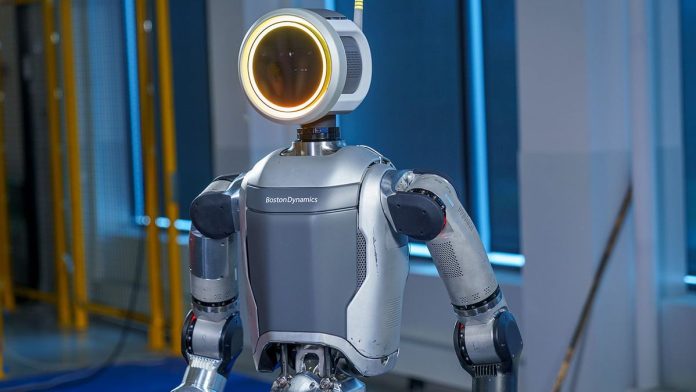Just a day after Boston Dynamics announced the discontinuation of the Atlas hydraulic robot, the robotics company has already unveiled its replacement. This is an all-electric Atlas robot designed for real-world applications.
The latest robot is the embodiment of decades of research by the company. According to representatives of Boston Dynamics, this will be more than just an impressive research and development project. “Ten years ago, we were one of the few companies making a real effort to develop humanoid robots,” Boston Dynamics said in a statement. – Now the situation in the field of robotics is completely different. Our customers have seen the success of Spot and Stretch and are looking forward to solving the next challenge with Atlas.”

The company works closely with various customers, including Hyundai, and it is the next generation of the Korean car giant’s production facilities that will be the testing ground for the new Atlas robot. “This is the first look at the real product, but not the last,” the company emphasized. “Similar to the deployment of Stretch, we will be working with a small group of innovative customers, starting with Hyundai, to test the capabilities of Atlas over the next several years.”
Despite the same name, the new Atlas and its predecessor are significantly different. Sure, it can do the same tricks, turns and flips, but it has no exposed cables and a kinder vibe. The all-electric Atlas robot will be significantly stronger and have a wider range of motion than its predecessor. The new version will be based on the capabilities of the older Atlas robots to lift and carry various heavy, irregularly shaped objects.
Despite its humanoid form, the all-electric Atlas robot can perform movements that are impossible for a human, thanks to a set of powerful and highly flexible actuators on most joints.
It’s also been reported that autonomous mobile robots like Atlas will need more than just impressive hardware to become commercially successful. Understanding the importance of integrating robots into our daily lives, Boston Dynamics recently launched Orbit software specifically. This centralized platform will enable the management of entire robotic fleets, construction site maps and digital data.

In addition, Boston Dynamics plans to use the information gained from more than 1,500 implementations of its Spot robot to ensure that the new Atlas robot will work effectively with humans. “We have equipped our robots with new AI and machine learning tools, such as reinforcement learning and computer vision so that they can work efficiently and adapt to complex real-world situations,” the company says.
Read also:
- The Unitree H1 robot has become the fastest humanoid robot in the world
- Robots of the future: will artificial intelligence get a body?


